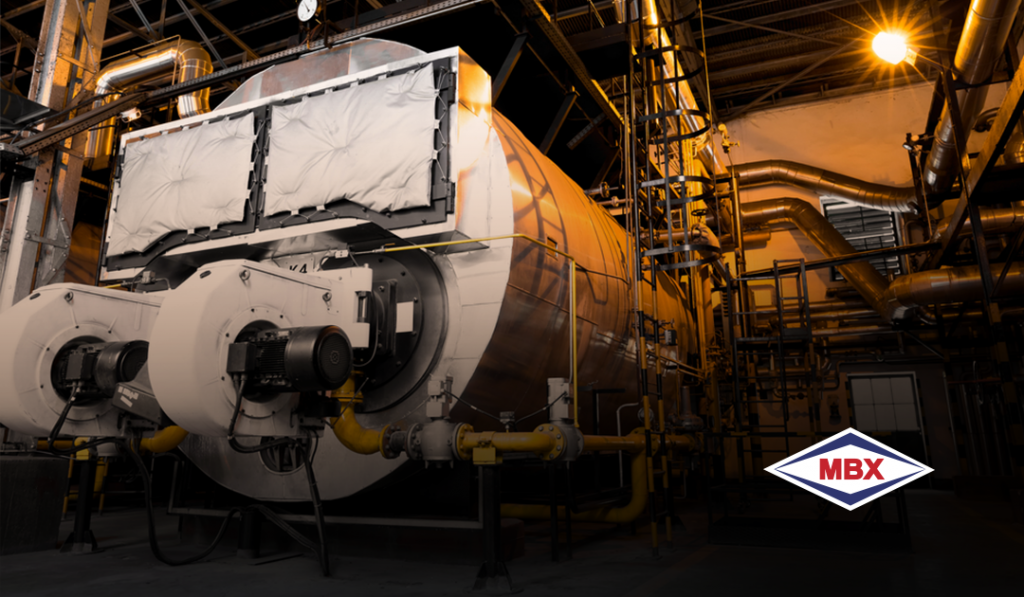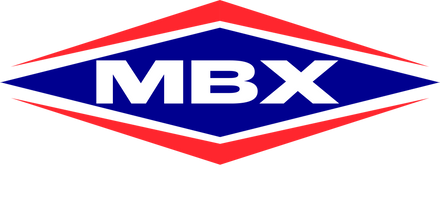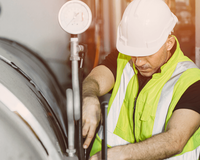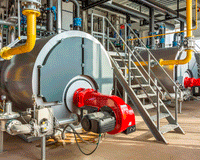5 Interesting facts about boilers that you need to know

Based on the classic definition presented in NR-13, boilers are equipment designed to produce and accumulate steam, under pressure higher than atmospheric pressure, using any energy source.
But did you know that there are some interesting facts about this type of equipment? In this content, we have gathered 5 interesting facts about boilers that you need to know. Follow along!
1. How do boilers work?
In simple terms, every boiler is characterized as a closed tank where a certain liquid (usually water) is heated, forming a vaporized fluid that will later be used in various heating processes or applications. The generated steam flows, at high pressure, through the tubes.
Therefore, the boiler is responsible for heating the water and generating steam, using two common methods: the fire tube (fire tube boiler) and the water tube (water tube boiler).
In a fire-tube boiler, the combustion products circulate inside the tubes, which are immersed in the water to be vaporized. In the water-tube model, the water to be vaporized circulates through the tubes, and the combustion products circulate outside them.
2. The first boiler developed by Babcock & Wilcox
Experts in the field agree that George Babcock and Steven Wilcox are the “fathers of boilers,” having developed the first steam boiler in 1867 and patented it that same year. This boiler used tubes that were inside a structure with refractory walls to generate steam.
The first boilers used coal as fuel, which operated at a very low rate of heat input. Solid walls of refractory bricks were necessary because they aided the combustion process by bringing the generated heat closer to the furnace area.
Over the years, other steam boiler designs were developed, aiming for greater efficiency in the flow of water and steam through the boiler. This increased the steam generation capacity and consequently the efficiency of the equipment.
3. ASME: Do you know what it is?
In 1880, faced with the rapid expansion of mechanization and industrialization throughout the world, many industries faced serious problems with numerous incidents and explosions of boilers and pressure vessels , causing the death and injury of thousands of workers and residents around the industries.
This led to the realization of the need for regulations for the manufacture of pressurized equipment, which was the starting point for ASME, the American Society of Mechanical Engineers. This is a non-profit association of engineering professionals that created a code project, construction, inspection and testing of equipment, including boilers and pressure vessels.
This association was founded in 1880 in the USA by a small number of industrial leaders. Today, this association has around 120,000 members distributed in 140 countries, including Brazil.
ASME certifies companies linked to the pressurized equipment industry, attesting that the products, services and quality systems of certified companies meet the requirements of the ASME Boiler and Pressure Vessel Code .
4. Boiler legislation: NR-13
Established by the Ministry of Labor (Secretariat of Health and Safety), compliance with Regulatory Standard number 13 is essential. It determines health and safety regulations for companies that work with the operation, maintenance and inspection of boilers.
The objective of NR-13 is quite clear. This standard establishes minimum requirements for managing the structural integrity of steam boilers, pressure vessels and interconnecting pipes, essentially in aspects related to installation, inspection, operation and maintenance, aiming at the safety and health of workers.
Interestingly, NR-13 undergoes recurring changes, especially in light of the rapid advancement of technology, requiring the standard to keep up with this progress. The last change occurred in 2019, with seven changes to equipment, compliance with rules, inspection and company responsibilities.
5. Main components of boilers
As already mentioned, boilers are equipment designed to produce and accumulate steam under high pressure, but do you know what components and parts make up a boiler?
Basically, traditional boilers have the following components:
- Burner – designed to burn fuel;
- Feeder – used when solid fuel is burned;
- Furnace – container where fuel is burned;
- Superheaters;
- Fan;
- Economizer – a device designed to increase boiler efficiency. It is a heat exchanger that recovers energy that would otherwise be wasted in the combustion gases;
- Air preheater;
- Exhaust fan;
- Chimney – gas outlet device, through which combustion gases escape to the external area of the boiler.
Do you want to know more about boilers? Then we invite you to learn about the importance of boiler maintenance in our exclusive content .





